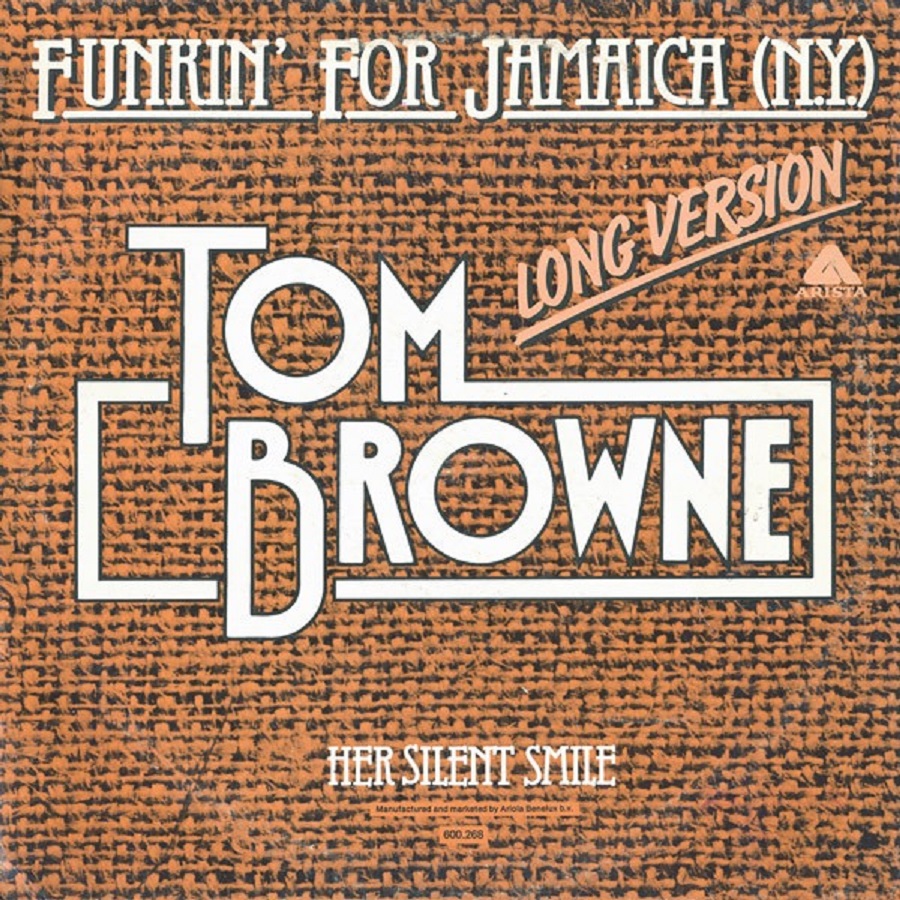Precious Pop Pearls: The Story Behind Tom Browne – “Jamaica Funk”
Picture this: a young trumpeter from Queens walking through the busy streets of Jamaica every day. He absorbs the sounds of the cars, the people, and the music he hears. For Tom Browne, it was indeed more than just a walk home; it became the inspiration for a song that would change the world. Born on 30th October 1954, he grew up with jazz in his ears and funk in his heart. And that ultimately translated into one of the funkiest songs ever.
Tom Browne
Browne wasn’t the child of wealthy parents who could pay for music lessons. He learned music the hard way, through practice. Later, when he had earned some money, he studied at the Manhattan School of Music and Art, learning primarily by listening. Whilst other children played, he sat behind the piano. Later, he picked up the trumpet and discovered that this was truly his instrument. The transition from classical exercises to jazz and funk felt natural to him, as if he was finally coming home.
In the late seventies, he played with Sonny Fortune, an experience that taught him how to blend tradition with innovation. It was this period that prepared him for what was to come: a song that would bring together jazz, funk, and soul in a way nobody expected.
Funkin for Jamaica
At home with his parents, the miracle finally happened. Tom was sitting at the piano playing some chords when he suddenly conceived the melody that would later become world-famous. Jamaica, Queens, New York, USA—his neighbourhood, his home, his inspiration—finally got its own soundtrack.
What made this song so special wasn’t just the catchy melody. It was the way Browne made different musical worlds collide. The trumpet danced above a thick funk beat, whilst Toni Smith’s voice gave the whole thing a soul that touched even the most critical listener. In July 1980, it was released, and suddenly, jazz-funk was no longer a small niche.
The timing was perfect. Disco was disappearing, and people were looking for something new but familiar. “Funkin for Jamaica” gave them exactly that—the accessibility of pop with the creativity of jazz. The song shot to number one on the Billboard R&B chart and stayed there for four weeks. In the United Kingdom, it reached the top 10. For a relatively unknown jazz musician, this was a miracle. But it was a more than deserved miracle.
Cover Versions
When a song really takes off, others start covering it. “Funkin for Jamaica” received a remix treatment as early as 1991, and later came various versions, including the M+M Mix from 2017 by John Morales. DJs and producers began using samples from the original in their own creations.
What’s striking about these covers is how differently artists approach the song. Some stick to the original funk groove, others add modern beats. Hip-hop producers discovered the power of Browne’s trumpet lines and used them as the basis for completely new songs. It proved that the original was strong enough to carry different interpretations.
The remix culture of the nineties gave the song a second life. New generations discovered Tom Browne through these versions, and suddenly he was no longer an artist from the past but someone whose music still proved relevant.
Love Approach
“Funkin for Jamaica” was the opening track of Browne’s album “Love Approach”, but it wasn’t the only song worth mentioning. The entire album breathes a refreshing approach to jazz-funk that was new at the time. Browne had learned from his earlier album “Browne Sugar”, and on “Love Approach” he sounded more confident, more playful. The infamous difficult second album proved not to be a flop, but his breakthrough.
That album also produced “Thighs High (Grip Your Hips and Move)”, a song that in 1981 once again proved that Browne was no one-hit wonder. Where “Funkin for Jamaica” made people dance with its joyful energy, “Thighs High” had a more sensual, more mature sound. It reached fourth position in the R&B charts and showed that Browne could explore different sides of love and desire.
“Thighs High” had a different approach. Where the first song was about coming home, about pride in your neighbourhood, this song was about physical attraction and the pleasure of the moment. Browne’s trumpet was given more room to breathe, the arrangements were richer, and the production was more polished.
Jamaica, Queens
Forty-five years later, “Funkin for Jamaica” remains a wonderful gem. The song represents a moment when music knew no boundaries, when a boy from Queens could make the world dance to his melody. Tom Browne proved that authenticity is universal—his love for his neighbourhood became everyone’s love for home.
Browne himself took other paths. He became a pilot, found God, and made different music. But whenever those first notes of “Funkin for Jamaica” play, he’s once again that young trumpeter who let his heart speak. The song became bigger than its maker, a piece of music history that still feels fresh.
Perhaps that’s the secret of true pop music: it springs from something very personal but speaks to something universal. Jamaica, Queens, became through Tom Browne’s eyes the place where everyone came from, where everyone returned to, where funk and feeling came together in four minutes that stopped time.





